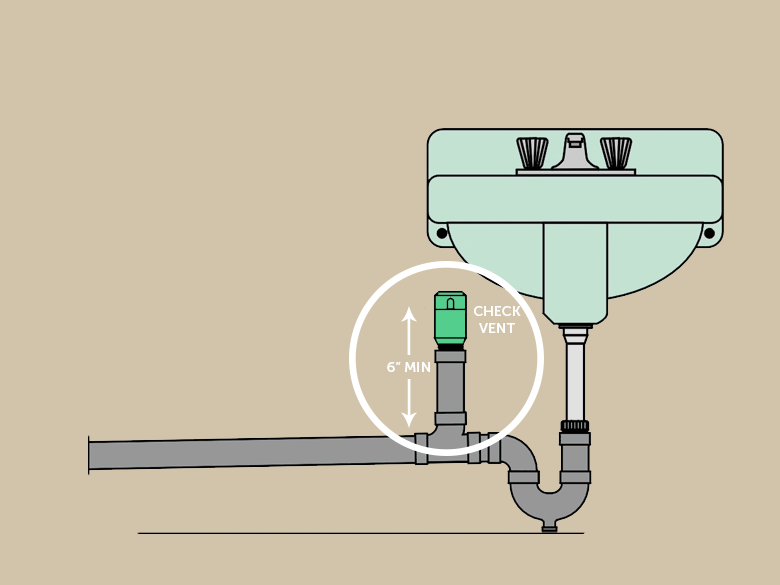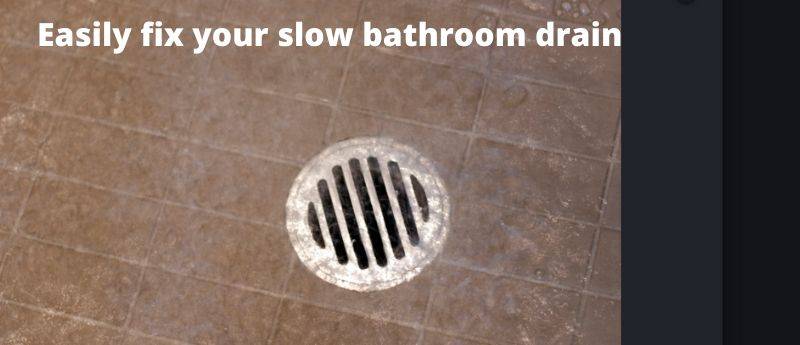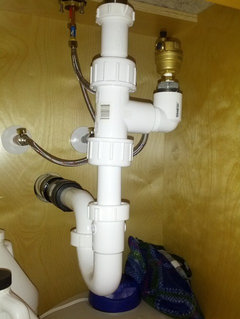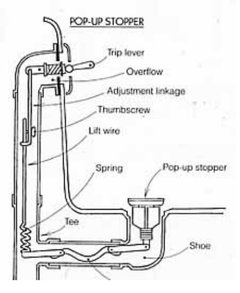Bathroom Sink Drain Airlock
Understanding the Basics of Bathroom Sink Drain Airlock
The functionality of a bathroom sink drain is crucial for a smooth and efficient plumbing system. However, sometimes an issue called an airlock can disrupt the flow of water and cause inconvenience. Understanding the basics of a bathroom sink drain airlock can help you identify and address the problem effectively.
- What is a Bathroom Sink Drain Airlock? A bathroom sink drain airlock occurs when air gets trapped in the plumbing system, preventing water from flowing freely. This can happen due to improper installation, clogs, or blockages in the pipes. When an airlock occurs, you may notice that the water drains slowly or not at all, leading to a backup in the sink.
- Causes of Bathroom Sink Drain Airlock: Several factors can contribute to the formation of a bathroom sink drain airlock. One common cause is a sudden change in water pressure, such as when the main water supply is shut off and then turned back on. Additionally, inadequate venting, a clogged drainpipe, or incorrect pipe installation can also lead to an airlock.
- How to Identify a Bathroom Sink Drain Airlock: Detecting a bathroom sink drain airlock is crucial for prompt resolution. Common signs include gurgling sounds from the drain, water draining slowly, or water backing up in the sink. If you notice any of these symptoms, it is likely that an airlock is the culprit.
- The Importance of Resolving a Bathroom Sink Drain Airlock: Leaving a bathroom sink drain airlock unresolved can lead to further plumbing issues. It can cause damage to the pipes, invite the growth of mold and bacteria, and result in foul odors. Therefore, it is essential to address the problem as soon as possible.
- Steps to Resolve a Bathroom Sink Drain Airlock: To resolve a bathroom sink drain airlock, you can try simple DIY methods such as using a plunger or a drain snake to dislodge any clogs or blockages. Another effective technique is to create a vacuum by covering the overflow hole and running water into the sink. If these methods fail, it is advisable to seek professional assistance.

Signs and Symptoms of a Bathroom Sink Drain Airlock
A bathroom sink drain airlock can often go unnoticed until it causes noticeable disruptions in the plumbing system. Being aware of the signs and symptoms of an airlock can help you identify the issue early on and take appropriate measures to resolve it.
Slow Draining Sink: One of the most common signs of a bathroom sink drain airlock is a slow-draining sink. If you notice that the water takes an unusually long time to drain, it could indicate the presence of an airlock in the plumbing system.
Gurgling Noises: Another telltale sign of a bathroom sink drain airlock is gurgling noises coming from the drain. When air gets trapped in the pipes, it can create these peculiar sounds as water tries to flow through the airlock.
Water Backup in the Sink: If you find water backing up in the sink instead of draining properly, it is a clear indication of a blockage or airlock in the plumbing system. This can be caused by trapped air preventing water from flowing freely.
Foul Odors: An unpleasant smell emanating from the bathroom sink can also be a symptom of a bathroom sink drain airlock. The trapped air can lead to stagnant water, creating an environment for the growth of bacteria and the development of foul odors.
Multiple Clogged Drains: In some cases, a bathroom sink drain airlock can affect multiple drains in your home. If you notice that other sinks, bathtubs, or showers are also experiencing slow drainage or backups, it is likely that there is an airlock in the main plumbing system.
DIY Solutions to Clear a Bathroom Sink Drain Airlock
Dealing with a bathroom sink drain airlock can be a frustrating experience. However, there are several do-it-yourself (DIY) solutions that you can try to clear the airlock and restore proper drainage in your sink. Here are some effective methods to consider:
Plunger Method
Using a plunger is one of the simplest and most common DIY solutions for clearing a bathroom sink drain airlock. Start by filling the sink with enough water to cover the plunger’s rubber cup. Place the plunger over the drain and vigorously plunge up and down several times. The suction created can help dislodge the airlock and allow the water to flow freely.
Boiling Water
Hot water can be another effective DIY solution to clear a bathroom sink drain airlock. Boil a pot of water and carefully pour it down the drain in stages, allowing a few seconds between each pour. The hot water can help dissolve any grease or buildup causing the airlock and restore proper drainage.
Vinegar and Baking Soda
The combination of vinegar and baking soda can create a chemical reaction that helps break down clogs and clear an airlock. Start by pouring a cup of baking soda down the drain, followed by a cup of vinegar. Allow the mixture to sit for about 15 minutes, then flush the drain with hot water. This method can help dislodge the airlock and improve drainage.
Wire Hanger Method
If the airlock is caused by a visible clog near the surface, you can try using a wire hanger to remove it. Straighten out a wire hanger and create a small hook at one end. Insert the hooked end into the drain and gently maneuver it to dislodge the clog. Once cleared, run hot water to flush out any remaining debris.
Vacuum Method
Using a vacuum cleaner can also help clear a bathroom sink drain airlock. Cover the overflow hole with a cloth or towel to create a seal. Place the vacuum hose over the drain and turn it on to create suction. The vacuum’s force can help remove the airlock and restore proper water flow.
Professional Methods to Resolve a Stubborn Bathroom Sink Drain Airlock
While DIY solutions can often resolve a bathroom sink drain airlock, there are instances where the problem persists or becomes more challenging to tackle. In such cases, it may be necessary to seek the expertise of a professional plumber who can employ advanced methods to resolve the stubborn airlock.
Hydro Jetting
Hydro jetting is a professional method that uses high-pressure water to clear stubborn clogs and airlocks in plumbing systems. A plumber will insert a specialized nozzle into the drain and release a powerful jet of water that can dislodge any blockages and remove the airlock. Hydro jetting is effective for both residential and commercial plumbing systems.
Video Camera Inspection
In situations where the exact cause of the airlock is unclear, a professional plumber can perform a video camera inspection. This involves inserting a small camera into the drain to visually inspect the pipes and identify any underlying issues such as damaged pipes, invasive tree roots, or other obstructions contributing to the airlock. Once the problem is identified, the plumber can take appropriate measures to resolve it.
Drain Snaking
Drain snaking is a common professional method used to clear stubborn airlocks and clogs. A plumber will use a flexible auger, known as a drain snake, to maneuver through the pipes and remove the blockage causing the airlock. This method is effective for reaching deeper clogs and restoring proper water flow.
Pipe Replacement or Repair
In some cases, a stubborn bathroom sink drain airlock may be due to damaged or faulty pipes. A professional plumber can assess the extent of the damage and determine if pipe replacement or repair is necessary. By addressing the underlying issues, the plumber can prevent future airlocks and ensure a well-functioning plumbing system.
Professional Maintenance Services
To prevent future airlocks and maintain a properly functioning bathroom sink drain, professional plumbers offer routine maintenance services. These services may include drain cleaning, pipe inspections, and preventive measures to keep the plumbing system in optimal condition. Regular maintenance can help identify and address potential issues before they develop into stubborn airlocks.
Preventing Future Bathroom Sink Drain Airlocks
Experiencing a bathroom sink drain airlock can be a hassle, but there are steps you can take to prevent future occurrences. By implementing proper maintenance techniques, you can keep your bathroom sink drain functioning smoothly and avoid airlocks. Here are some valuable tips and tricks to consider:
Regular Drain Cleaning
Performing regular drain cleaning is essential to prevent clogs and potential airlocks. Use a drain cleaner or a mixture of vinegar and baking soda to keep your drains clear of debris and buildup. Avoid pouring grease, oil, or large food particles down the drain, as they can contribute to clogs and airlocks.
Use Drain Strainers
Installing drain strainers in your bathroom sink drains is a simple yet effective way to prevent hair, soap residue, and other small debris from entering the drain. These strainers catch the particles, allowing water to flow freely and reducing the risk of clogs and airlocks.
Avoid Harsh Chemicals
While it may be tempting to use harsh chemicals to clear clogs, they can cause damage to your pipes and potentially lead to airlocks. Instead, opt for natural drain cleaning methods or seek professional assistance if you encounter stubborn clogs. This will help maintain the integrity of your plumbing system.
Check and Maintain Ventilation
Proper ventilation is crucial for the smooth operation of your bathroom sink drain. Ensure that the vent stack or vents associated with the drain are clear of obstructions, such as debris or animal nests. Regularly inspect and clean these vents to ensure proper airflow and prevent the formation of airlocks.
Professional Maintenance Checks
Periodically scheduling professional maintenance checks for your plumbing system is highly recommended. A professional plumber can identify any potential issues, such as damaged pipes, improper installations, or inadequate venting, that could lead to airlocks. By addressing these concerns early on, you can prevent future airlocks and maintain a properly functioning bathroom sink drain.
Educate Household Members
Properly educating everyone in your household about good drain practices can go a long way in preventing future airlocks. Teach them about the importance of not flushing foreign objects down the drain and avoiding excessive use of toilet paper or other materials that can contribute to clogs. Encourage responsible usage to maintain a healthy plumbing system.
Vessel sink doesn’t drain
How to fix a slow draining vessel sink – Donu0027t use an AAV
Confused about bathroom sink drains with and without overflow.
How to Vent a Kitchen Sink Drain: Steps with pipe Diagrams
How Do P-Traps Work? Spec. Sense
Related Posts:
- Bathroom Sink Ideas DIY
- Bathroom Sink Fixtures Faucets
- Rustic Bathroom Sink Ideas
- Bathroom Sink Ideas Small Space
- Small Modern Bathroom Sink
- How To Fix A Leaky Bathroom Sink Drain Pipe
- Large Square Bathroom Sink
- Round Bathroom Sink Bowls
- 16″ Bathroom Sink
- Bathroom Sink Pipe Size








